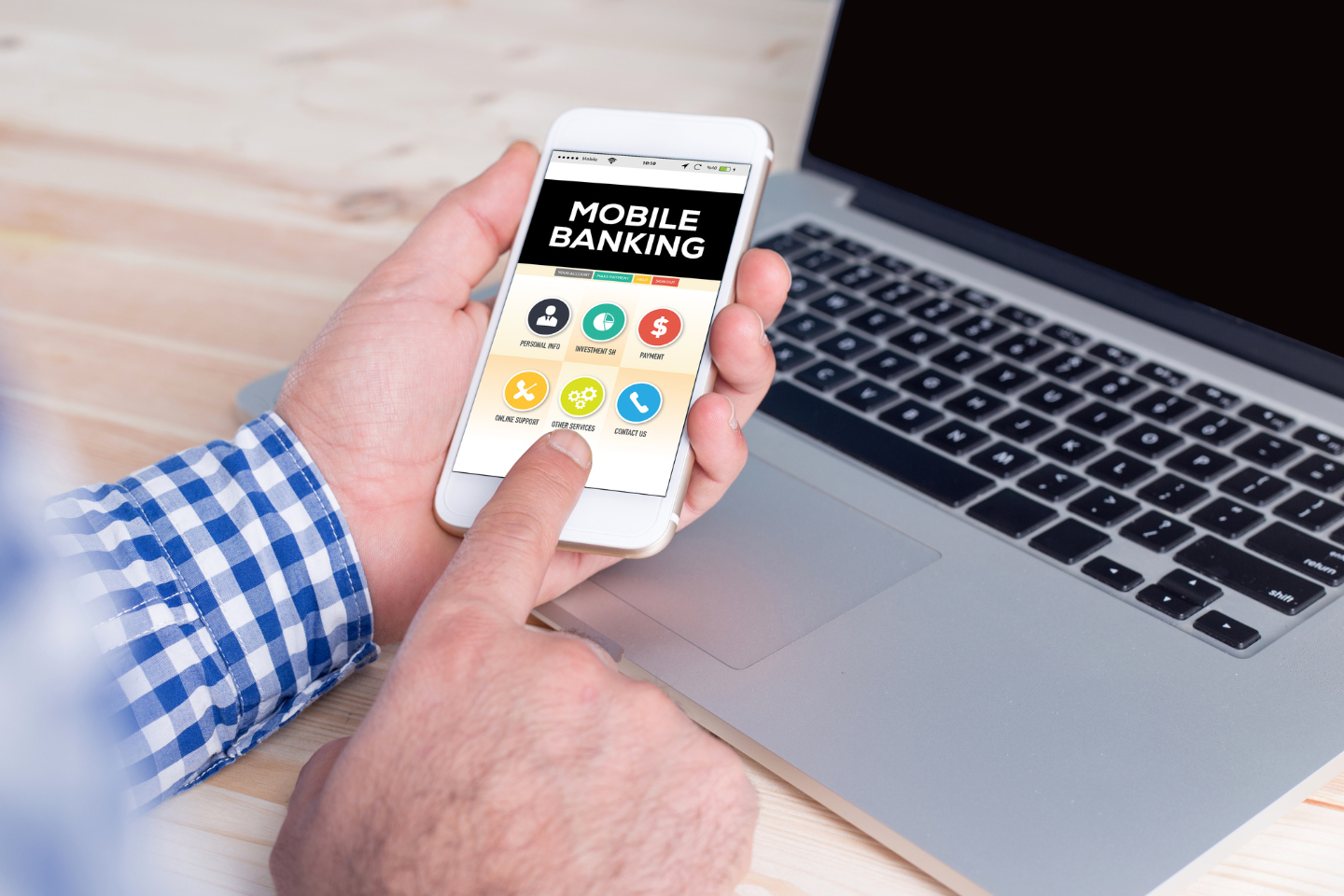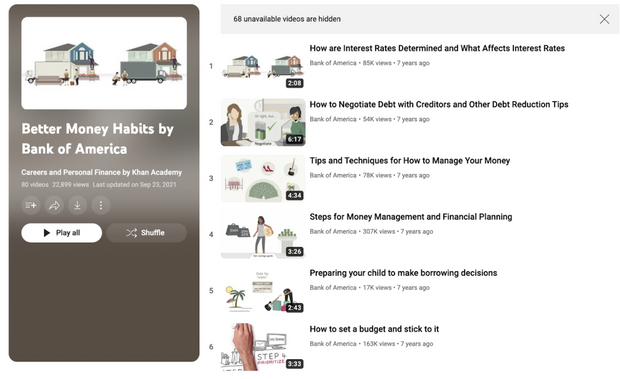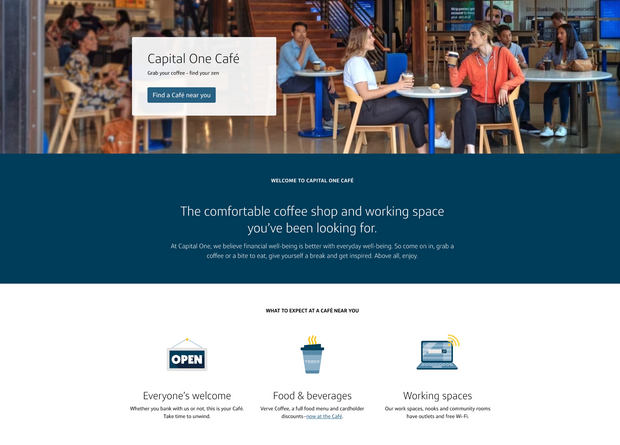The Ultimate Guide to Relevant Mobile Banking Apps
What makes a mobile banking app truly indispensable? Relevance.


We need to talk about mobile banking apps. Something just doesn’t add up. Two out of three consumers say they can’t live without their banking app. But our recent study found that 39% of digital professionals struggled with low engagement over the past year.
So what determines whether your mobile banking app becomes ingrained in customers' daily lives or relegated to the background, like a glorified utility partner?
While seamless and secure interactions are non-negotiable, personalization is another key ingredient. Real personalization—not generic financial advice personalization. In this handy guide, we’re digging into successful mobile banking app experiences and how to make them more relevant to your customers so they'll actually stick around.
Let's get started!
Build daily relevance through meaningful support & appreciation
Trained by hyper-personalized consumer platforms and FinTech disruptors, customers have adopted skyrocketing expectations of their primary financial providers. According to Salesforce:
62% of customers would switch providers if they felt treated like a number, not a person.
53% of customers would switch if services felt impersonal.
73% of all customers expect companies to understand their unique needs and expectations.
The same expectations apply to your mobile banking app. If you want your customers to engage beyond account checks and routine payments, you need to be invested in their success.
How? Think beyond core products and services and use your app to equip customers with content, tools and resources to actually help grow their wealth. These can include:
1. Strategic direction on professional development and career growth
Thinking beyond a specific product flow can help position your mobile banking app as an invaluable, active partner in your customers’ prosperity. Take adjacent topics like professional development and career growth.
This could mean tactical advice to proactively empower your customers to progress in their professional journeys, including career pivots or paid sabbaticals. You can also create scripts to help customers negotiate higher salaries, better perks or coveted appraisals.
For example, Wells Fargo offers CollegeSTEPS, a step-by-step 14-day tutorial to help recent grads with their job search. It includes personality quizzes to determine a fulfilling career path,, a resume builder, and cover letter templates.
JP Morgan offers short videos on personal development on their YouTube channel. You could go a step further and add these to an in-app e-learning section and recommend them when they’re relevant.
2. Interactive playbooks for achieving specific goals
More than half of consumers (51%) want more help than they’re getting from their financial provider and 40% of those who have received communication from their provider were “unhappy” about the generic advice they received.
One remedy is to tailor advice based on user activity. For example, if someone lingers on a particular form field when applying for a loan, they could be a good candidate for your no-nonsense guide to buying a house. You can also take a cue from US Bank , whose Financial IQ site offers interactive experiences guiding customers on the financial nitty-gritties of major life decisions, like house remodeling or saving for college.
Another example is ICICI Bank, whose mobile app offers categorized product recommendations based on cash flow, spending analysis, and market fluctuations. They let customers know about an increase in fixed deposit rates directly within an investment vehicle to encourage them to put money aside.

US Bank is another banking institution that offers interactive experiences through their Financial IQ site. The interactive blog walks customers through the nitty-gritty of major financial journeys such as house remodeling or saving for college.
3. Hyper-personalized rewards
Partner up with relevant brands to incentivize good behavior. For example, a customer saving up for a trip to Oaxaca can earn a seat upgrade on Aeromexico after meeting 75% of their savings goal.
Chase Ultimate Rewards partnered with Peloton, the popular fitness equipment and media company, to offer exclusive loyalty rewards for Chase cardholders. Customers can use their points to purchase Peloton products, such as exercise bikes or subscriptions, earn bonus points or get discounts.
4. Tailor-made tips on how to earn or save money
Tailor tips and products based on your customers’ account activities or transactions within your mobile banking app. For example, you could give exclusive access to financial webinars or courses based on the customer's interests and goals—like starting a business or planning for retirement.
Bank of America offers a "Better Money Habits" platform in partnership with Khan Academy, which includes resources that improve financial literacy, such as the cost of owning a car or saving money on apartment expenses.

5. Meaningful support when times get tough
Bain and Company’s 2023 Customer Behavior and Loyalty in Banking study found that personalization has a strong influence on loyalty and advocacy. There’s a 123-point difference in NPS® (Net Promoter Score—a measure of customer satisfaction) between respondents who strongly agree that their bank interacts based on knowing who they are and those who strongly disagree.
Here are some ways to show support:
Long-form tutorials to help them navigate hardships. If a customer gets laid off, guide them on which bills to prioritize (e.g., rent or mortgage over Netflix or less obvious choice like the percentage split between groceries and utility), provide interview best practices with nuanced advice depending on the job, or advise them on the three most important things to do following a layoff.
This also signals to the rest of your customers what kind of support they can expect if they ever fall on hard times themselves.
Build flexibility into product terms. For example, offer adjustments in interest rates so your customer can adapt to changing financial situations without undue pressure. You could use machine learning algorithms to understand when customers are going through major life changes (financial hardships, sickness, or loss of a family member) and automatically lower rates. This tells your customers you’re willing to walk alongside them as they navigate hardships.
A simple tool such as a sliding scale to adjust interest rates within reason is a win-win. It helps customers slow down during turmoil and pay off loans more quickly during windfalls.
Foster a sense of community by connecting customers with peers with similar financial goals.
Without disclosing personal information, create anonymized group forums where customers can share experiences and support each other in reaching important financial milestones.
For example, Capital One has an initiative called Capital One Cafés, where customers get coaching on how to align their savings and life goals. While this is an offline endeavor, it shows that the bank is willing to go the extra mile to support their customers.
You become a prosperity advocate by offering advice on how to create wealth, not just manage money.

Reframe banking around life’s little moments
To determine the best way to become a prosperity partner, stop thinking in terms of fragmented product lines or flows, like signing up for a savings account. Instead, start thinking about your mobile banking app in the context of broader customer journeys and JBTDs (jobs-to-be-done). With the JTBD model, customers essentially enlist products and services to achieve an outcome.
The JTBD framework is a perspective shift from product-centric to customer-centric narratives. It permeates every layer of branding, marketing and sales. With JTBD, you build blog content around customer questions, use paid ads to demonstrate mission-critical tasks and focus on creating empathetic customer interactions.
When every element of the banking experience is independently functional and collectively tailored to your customer’s life—you’ve perfected the balance. From targeted documentary series that help them learn money skills to blog content they use down the road, wrap every product in tremendous value.
For example, say a customer opens up a savings account with the ultimate goal of buying a house. A JTBD-led framework would help the bank package multiple offerings, services and value-adds that individually and collectively drive towards the customer’s ultimate goal. This could look like:
Customized financial planning tools: Tools that help the customer calculate how much they need to put aside for a down payment on their dream house based on their income and spending habits. A more personalized alternative to a traditional 50:30:20 (bills:savings:investment) calculator would offer more relevant recommendations — for example, by cutting salon expenses down from weekly to bi-monthly, you can save for the renovations in six months instead of nine.
Educational content: Resources on the process of buying a home with detailed insight into topics like credit scores, mortgage options and the housing market. You could go a step further by personalizing these for the area your customers want to live in, pros and cons of the neighborhood, local school district ratings, and budgeting for amenities.
Personalized product recommendations: Beyond the savings account, retail banks can recommend mortgage products, home insurance and even partner services like real estate agencies.
Goal-oriented savings programs: Savings accounts specifically designed for future homeowners, with features like higher interest rates for long-term savings goals.
Regular check-ins and progress updates: Personalized check-ins and notifications that track progress towards the savings goal, offer encouragement and adjust recommendations as the customer's situation evolves.
Mobile banking app relevance in action [Examples]
Highly relevant mobile banking apps experiences typically share three common traits:
Customer-centricity across product, customer success, and sales teams. A truly customer-centric approach isn’t limited to product lines or even product development—it shows up in content, support calls and even emails. Consider every interaction an opportunity to build a connection and become a part of your customers’ lives.
Technical infrastructure to gather, segment and analyze customer data across verticals and product lines.
Customer intelligence technology to actually translate that data into relevant experiences.
But what do these experiences actually look like in the real world? Let’s take a look at two examples, Monzo and BBVA, Spain.
Monzo (UK)
Monzo launched its banking app ‘Mundo’ in 2015, initially only offering a prepaid debit card. In 2018, they secured a UK banking license, allowing them to offer current accounts, direct debits, bank transfers and the ability to receive salary payments directly into Monzo accounts.
While its app was already miles ahead of legacy competitors, Monzo differentiated itself even further by turning it into a full-blown financial hub for its customers. They partnered with Wise to provide international money transfers and Flux to add itemized receipts and loyalty points from within the app. They also launched Flex, a buy-now-pay-later product equipped with a virtual credit card.
To further differentiate itself from traditional banks and FinTech competitors, Monzo offered tools to help users improve their financial health and invest responsibly. These included:
- Budgeting tools: Advanced categorization and budgeting features like spending limits, savings goals and monthly budgeting by category
- Savings pots: Virtual 'pots' for users to save money for specific goals while earning interest
- Ethical investments: Opportunities to invest in socially responsible and ethical funds, with an option for in-app charity donations
Its tireless focus on actively providing value to customers—beyond core products—didn’t just set Monzo apart from traditional banks, but also other FinTech competitors. Monzo reported dramatic user growth, swelling from 200,000 in 2015 to seven million in 2023. It was also voted the best bank by customers at the British Bank Awards and the top current account provider in Great Britain and Northern Ireland for Overall Service Quality and Online and Mobile Banking Services (CMA 2023).
BBVA (Spain)
BBVA is a Spanish bank that offered services such as financial services, insurance and asset management similar to other traditional banks.
However, the 2008 financial crisis prompted the bank to switch gears and focus more on digital innovation to keep up with rising customer expectations. They released a mobile banking app and later an e-wallet.
In 2017, BBVA launched Bconomy, a product included in BBVA’s app, that offers financial advice based on customers’ spending habits and financial patterns. They also introduced open banking services through its API markets, which brought in partnerships with FinTechs and e-commerce platforms such as Metaco and Amazon.
Finally, they introduced three customer-centric products that aligned with their customers’ lifestyles and value systems after extensive market research. BBVA has a proprietary customer support model that aggregates customer complaints and opinions to anticipate trends and flag issues before they become obstacles. Via the data generated by this model, BBVA realized what kept their customers up at night as well as how they wanted to contribute to society.
Three of the products they came up with were:
Green loans: Designed for eco-conscious customers, these loans offered favorable terms for financing energy-efficient home renovations, solar panels and electric cars.
Express personal loans: With advanced analytics and machine learning, BBVA offered instant loan decisions to customers through its app. For example, when you applied for a car loan, the app would look at your financial transactions, income stability and spending patterns. It would also factor data such as employment history and current economic indicators to calculate the approved loan amount, interest rate and repayment terms.
BBVA Valora: A tool for customers shopping for a house, Valora generated property evaluations, price estimates and offers an affordability calculator.
As a result, in 2023, BBVA reported €8.02B in profits and an increase in their NPS® score by 11 percentage points from when they launched Bconomy. It also channeled €70B into sustainable businesses.
TLDR
Successful mobile banking apps meet customers where they’re at—both in their financial journeys and on their devices.
“Beyond suitable investment products, banks must seek to build platforms, systems and cultures that are necessary to serve individuals and families with scalable and highly personalized services and experiences," says Mike Lee, EY Global Wealth & Asset Management Leader.
Think how Amazon equipped the shopping experience with tailored recommendations, price-based comparisons and price drop alerts versus just a product directory.
Pivoting the focus from linear product flows to holistic value building is a definite shift, but will ultimately differentiate mobile banking apps as highly relevant and indispensable to the individual customer. Because real personalization comes from ultimately letting customer interactions, needs and expectations inform how you serve them.
